发散光束照射下的颗粒散射测量技术
VIP免费
摘 要
采用 Mie 散射理论的小角前向散射颗粒测量技术,是目前应用最为广泛的光
散射颗粒测量技术。随着科学技术的不断发展,细微颗粒的应用越来越多,为满
足生产实践对细微颗粒的测量要求,研究人员在传统前向光散射法基础上不断完
善和创新。在这些基于前向光散射法的颗粒测量技术中,均采用平行光照射的散
射模型或者会聚光照射的散射模型。平行光照射散射模型即传统的傅里叶变换系
统(CFS),具有测量区范围大的优点,但是由于接收透镜焦距不可能很小,因此
测量下限受到限制。会聚光照射散射模型即逆傅里叶变换系统(RFS)中,等效焦距
可以很小,因此可有效降低测量下限,但是当样品池与探测器间隔很小时,两个
表面的反射对测量结果影响较大。广义傅里叶变换颗粒测量技术(GFS)采用发散高
斯光束作为入射光,是一种新的颗粒测量方法,是对前两种技术的补充。
本文提出广义傅里叶变换系统光线传播计算模型,利用光线法推导了球形颗
粒散射光信号在探测平面的空间分布表达式。测量了不同的光束发散角和不同的
测量区厚度情况下探测器上的散射光信号分布,利用反演算法从散射光信号测量
值中提取出颗粒粒径分布信息,并与传统的傅里叶变换系统(CFS)结果比较。本
文还对多分散颗粒系进行了研究,对比了多分散系和单分散系中,对于同一种粒
径颗粒的测量结果的一致性。广义傅里叶变换系统光路简洁、结构简单、结果准确
具有潜在的应用价值,为光散射颗粒测量技术提供了一种新手段。
本文主要分为两大部分:理论部分和实验部分。第一章主要介绍了颗粒测量
和在线测量的重要性,以及基于前向光散射颗粒测量技术的发展与现状,并介绍
了广义傅里叶变换颗粒测量技术的背景和本文的研究内容;第二、三章为理论部
分,介绍了散射光能颗粒测量技术的基本知识,阐述了广义傅里叶测量技术的光
线传输模型,并进行了模拟计算,分析了该模型在不同装置参数下的理论计算结
果;第四、五章为实验部分,搭建了广义傅里叶变换颗粒测量技术的实验平台,
并进行了实验研究。在实验中,考虑了单模光纤激光器和接收透镜等装置的工作
原理及特性参数,描述了本套实验平台的实验测量结果并对实验结果分析。第六
章阐述了全文工作的总结和展望。
以上模拟和实验结果证明广义傅里叶颗粒测量技术理论模型,能够有效地进
行颗粒测量。
本论文工作由上海市教委创新项目(12ZZ136)资助。
关键词:颗粒测量 小角前向散射 Mie 散射 发散高斯光束
ABSTRACT
Particle measurement technique based on forward light scattering with Mie theory
has been the most widely used light scattering particle measurement technology. With
the development of science and technology, more and more fine particles are on the
application. In order to meet the requirement for the measurement of fine particles,
researchers unceasingly consummate and innovate the traditional forward light
scattering method. In these techniques, the collimated beam and/or convergent beam are
often used as the incident beam. The former is known as conventional Fourier system
(CFS),which has the advantage of large measurement range. However, the lower size
of particle is limited as the focal length of lens cannot be too short. The latter is called
reverse Fourier system (RFS), whose measurement limit can be reduced effectively
because the equivalent focal length can be very small. The negative effects are caused
by the disturbance from the light reflection between the surfaces of the sampling cell
and the detector. The Generalized Fourier system (GFS), which employs a divergent
Gaussian beam scattering model, is a new particle measurement technique and the
supplement for the above mentioned two methods.
In this paper, the theoretical model of GFS is presented. Analytical expressions,
based on the ray propagation, are deduced to describe the scattered light distribution on
the detector. Particle size distributions are extracted from the measurements by using the
inverse algorithm under different optical arrangements and these results are compared
with those obtained from the conventional Fourier system (CFS) technique. The poly-
disperse system is also studied to test the consistency with the mono-disperse system for
a fixed particle size. The method of GFS has several advantages such as simple optical
setup and structure, accurate result and so on, so it has potential application values
which provide a new method for light scattering technique.
In this paper, the details are presented in both theory and experiment. In chapter 1,
the development and present status of particle measurement technique based on forward
light scattering and the backgrounds of the GFS are introduced along with the
significance of the particle and the on-line measurement. Chapters 2 and 3 are the
theoretical parts, which briefly introduce the concept of the particle measurement
technology based on light scattering, present the theoretical model of the GFS, calculate
and analyze the scattered light distributions under different setups. Chapters 4 and 5 are
the experimental parts, in which the experimental setup is constructed and experimental
study is performed. The operating principle and the characteristic parameter of the
single-mode fiber laser and the receiving lens, the experimental results and the relative
discussion are also described in this part. In chapter 6, the work in this thesis is
summarized and the perspectives are also presented.
Simulation and experimental results show that the theoretical model of the GFS
can be used for particle measurement effectively.
The work in this thesis is supported by the Innovation Program of Shanghai
Municipal Education Commission (IPSMEC 12ZZ136).
Keywords: particle analysis, forward light scattering, Mie scattering,
divergent Gaussian beam
目 录
中文摘要
ABSTRACT
第一章 绪论........................................................1
1.1 颗粒测量与在线测量的重要性...................................1
1.2 基于前向光散射法的颗粒测量技术...............................2
1.2.1 传统前向光散射颗粒测量技术................................3
1.2.2 基于前向光散射法的颗粒测量技术的发展与现状...............4
1.3 课题的提出及本文的工作.......................................8
1.3.1 课题的提出...............................................8
1.3.2 本文工作.................................................8
第二章 光散射颗粒测量技术的基础知识...............................10
2.1 颗粒大小及分布的概念.........................................10
2.2 颗粒粒度的表示方法..........................................10
2.2.1 单个颗粒的粒径..........................................10
2.2.2 颗粒系的粒度分布........................................11
2.2.3 颗粒系的平均粒度........................................12
2.3 Mie 散射和 Fraunhofer 衍射.....................................13
2.3.1 Mie 散射理论.............................................13
2.3.2 Fraunhofer 衍射理论.......................................15
2.4 平行光照射的散射模型........................................18
2.5 会聚光照射的散射模型........................................19
2.6 小结........................................................20
第三章 广义傅里叶变换系统光线传输计算模型.........................21
3.1 高斯光束不同介质中的传播规律................................21
3.2 广义傅里叶变换系统的理论模型................................22
3.2.1 发散光束照射下的散射模型................................22
3.2.2 GFS 光线模型............................................23
3.2.3 数值计算结果分析........................................28
3.3 结论........................................................31
第四章 广义傅里叶变换系统颗粒测试结果.............................32
4.1 概述........................................................32
4.2 实验装置设计................................................32
4.2.1 发散光束装置............................................33
4.2.2 接收透镜................................................35
4.2.3 待测颗粒及样品池........................................36
4.2.4 多元光电探测器..........................................37
4.2.5 信号采集系统............................................38
4.3 颗粒测试....................................................38
4.3.1 背景光的测试............................................39
4.3.2 实验测量结果............................................39
4.3.3 理论与实验值相比较......................................44
4.4 小结........................................................47
第五章 广义傅里叶变换系统反演结果.................................49
5.1 概述........................................................49
5.2 Chahine 算法和投影算法.......................................49
5.2.1 Chahine 算法.............................................49
5.2.2 投影算法................................................50
5.3 反演计算....................................................52
5.4 小结........................................................63
第六章 总结及展望.................................................64
6.1 本文工作总结和主要结论......................................64
6.2 对后续工作的展望............................................64
参考文献..........................................................66
第一章 绪 论
第一章 绪 论
1.1 颗粒测量与在线测量的重要性
颗粒是一种在自然界和工农业生产中广泛接触和应用的物质形态,以多种形
式存在,可以是液体(液滴)、气体(气泡)或微小固体(粉末状),也可以是
具有生命力的细菌和微生物等,颗粒粒径的分布特性对物质的形态以及性能有着
直接的关系。
1) 颗粒在线测量在粉末冶金行业的应用
粉末冶金是制造金属材料、复合材料以及各种类型成品的工艺技术,以金属
或金属粉末或金属与非金属粉末的混合物作为原料。
在冶金工业中,粒度对粉末的加工成形和产品的最终性能起着重要的作用。
若粒度过粗,则回收率低、解离能力差;若粒度过细,则会浪费能源,导致矿浆
输送困难等问题,并且颗粒小到一定程度时物理性能会因为量子效应的作用而发
生变化。有些情况下,粒度直接决定冶金成品的性能,例如,当过滤材料所用粉
末颗粒为球状时,可用经验公式表示粉末颗粒粒径 与过滤精度 间的关系 [1]:
(1.1)
由此可知,粒度的在线测量是产品性能的保证,在粉末冶金行业是十分重要
的。
2) 颗粒在线测量在饮用水检测方面的应用[2]
随着人民生活水平的不断提高,人们对饮用水的要求也越来越高。但是,颗
粒状的杂质包括病毒、细菌和孢囊等往往存在于水中,如兰伯氏鞭毛虫和隐孢子
虫的病原性孢囊,体长约为2~8m,能够引发贾第虫病,如果不对这些颗粒进行
检测和控制,则会危害人类的健康,因此对水中微粒的测量就显得至关重要。
一般情况下,水处理环节中都需要进行在线的浊度检测,以确保合格,但是
滤池正常工作的时候,经过过滤后的颗粒大小大多在 10m以下。传统方法采用
浊度仪无法获得水中微粒的粒径,所以水中颗粒是否为有害物质也无从判别。颗
粒测量的方法可以检测出水中颗粒粒径分布以及相应浓度,定量描述水中微生物
的含量来判断饮用水的纯净度,比传统的浊度检测更直观、科学。
3) 颗粒在线测量在水泥建材行业的应用
水泥,是加入适量水后,可以在空气或水中硬化的无机胶凝材料,并可以将
砂、石等材料牢固地胶结在一起。根据研究显示,在熟料已经确定的情况下,水泥
性能由粒径决定:
1
摘要:
展开>>
收起<<
摘要采用Mie散射理论的小角前向散射颗粒测量技术,是目前应用最为广泛的光散射颗粒测量技术。随着科学技术的不断发展,细微颗粒的应用越来越多,为满足生产实践对细微颗粒的测量要求,研究人员在传统前向光散射法基础上不断完善和创新。在这些基于前向光散射法的颗粒测量技术中,均采用平行光照射的散射模型或者会聚光照射的散射模型。平行光照射散射模型即传统的傅里叶变换系统(CFS),具有测量区范围大的优点,但是由于接收透镜焦距不可能很小,因此测量下限受到限制。会聚光照射散射模型即逆傅里叶变换系统(RFS)中,等效焦距可以很小,因此可有效降低测量下限,但是当样品池与探测器间隔很小时,两个表面的反射对测量结果影响较大...
相关推荐
-
建筑工程投标文件范本-(格式)VIP免费
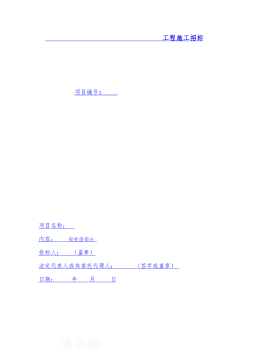
 2024-11-22 17
2024-11-22 17 -
幕墙工程施工组织设计方案VIP免费
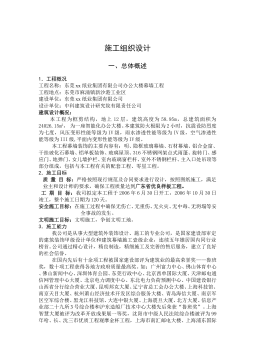
 2025-01-09 6
2025-01-09 6 -
建筑商品砼生产项目创业计划书VIP免费
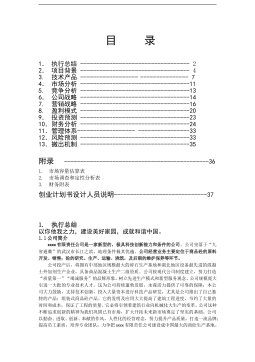
 2025-01-09 10
2025-01-09 10 -
建筑工程商业计划书模板VIP免费
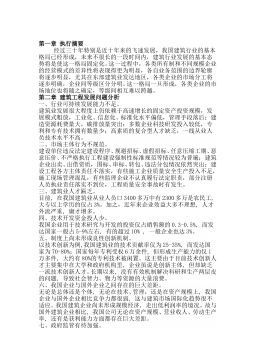
 2025-01-09 8
2025-01-09 8 -
工程项目施工计划书VIP免费
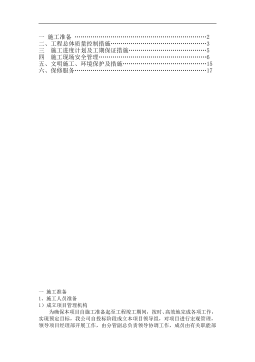
 2025-01-09 6
2025-01-09 6 -
《专业型文档》建筑企业计划书VIP免费
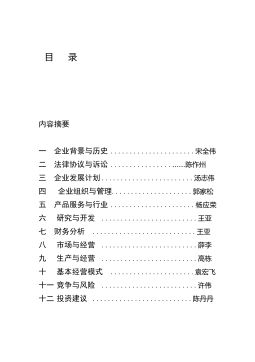
 2025-01-09 8
2025-01-09 8 -
xx水库灌区管道工程水工图纸C1VIP免费

 2025-01-09 13
2025-01-09 13 -
邮政区域仓储配送中心VIP免费
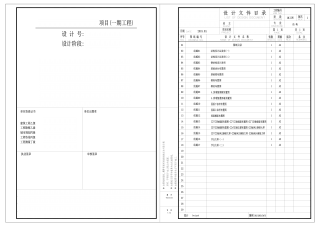
 2025-01-09 8
2025-01-09 8 -
疾病预防控制中心招标文件VIP免费
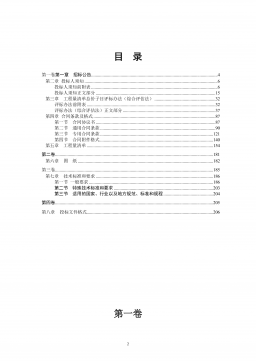
 2025-01-09 14
2025-01-09 14 -
体育健身中心施工招标文件VIP免费
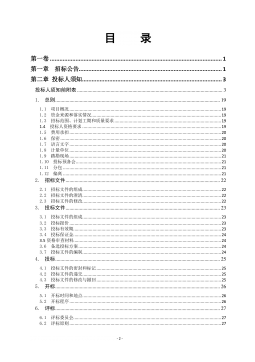
 2025-01-09 11
2025-01-09 11
作者:牛悦
分类:高等教育资料
价格:15积分
属性:75 页
大小:10.72MB
格式:DOC
时间:2024-11-11






